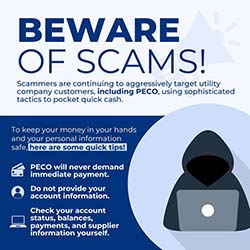ARA
Do you constantly feel like you “gotta go”? When you leave the house, do you always look where the nearest bathroom is, just in case? Bladder control problems are more common than you might think. Having an Overactive Bladder can affect your quality of life, and 16 percent of the adult population, or about 33 million people, have this condition, according to the Journal of Urology.
People with an Overactive Bladder, or OAB, often experience:
- High urinary frequency: More than eight times in a 24-hour period
- Urinary urgency: A strong, compelling need to urinate that cannot be delayed
- Urge incontinence: Wetting accidents, which occur before reaching a toilet
If you have bladder control issues, don’t let embarrassment stand in the way of finding a solution. After talking with a doctor, most people start with conservative therapies. For example, doing exercises like kegels to strengthen the pelvic floor muscle. Other first-step treatment options might include dietary modification, bladder training programs and prescription medication.
Unfortunately, conservative therapies fail up to 80 percent of people. Prescription medications are not an option for many people, and for others, they may experience unwanted side effects and stop taking them altogether. Exercise and diet modification can be strict and require a timely commitment. Furthermore, the results might not live up to what patients are hoping for.
Treatments like surgery work, but if you don’t want to go the invasive route, there is one more option to consider.
Bladder function is regulated by a group of nerves at the base of the spine called the sacral nerve plexus. By stimulating these nerves through gentle electrical impulses, you can gain better control of your bladder.
Posterior Tibial Nerve Stimulation, otherwise known as PTNS, is a non-drug, non-surgical therapy that is helping many people with OAB take control. The Urgent PC Neuromodulation System provides this low-risk treatment by indirectly stimulating the nerves responsible for bladder function using a nerve in your lower leg. Up to 80 percent of people who get PTNS have significant improvement in their bladder control symptoms, even when other treatment options have failed them in the past.
To get an Urgent PC treatment, you visit a doctor’s office. During treatment you will sit with your foot elevated. This allows the clinician to stimulate the area near your tibial nerve using a very thin needle temporarily placed in your ankle. Impulses travel along your leg to the nerves in your pelvis that control bladder function.
What does a PTNS treatment feel like? Most people simply feel a mild tingling sensation in their foot or ankle during treatment. You will receive an initial series of 12 treatments for 30 minutes each, typically scheduled a week apart. After the initial 12 treatments, you may only need occasional treatments or none at all.
Urinary incontinence may be caused by a number of things. For many, it could be a normal part of the aging process. For some women, pregnancy and childbirth are the cause. Men may experience OAB due to prostate surgery. Injury, chronic disease and obesity are also causes. No matter what the reason, there likely is a solution for you. For more information, visit www.urgentpcinfo.com.














Leave a Comment